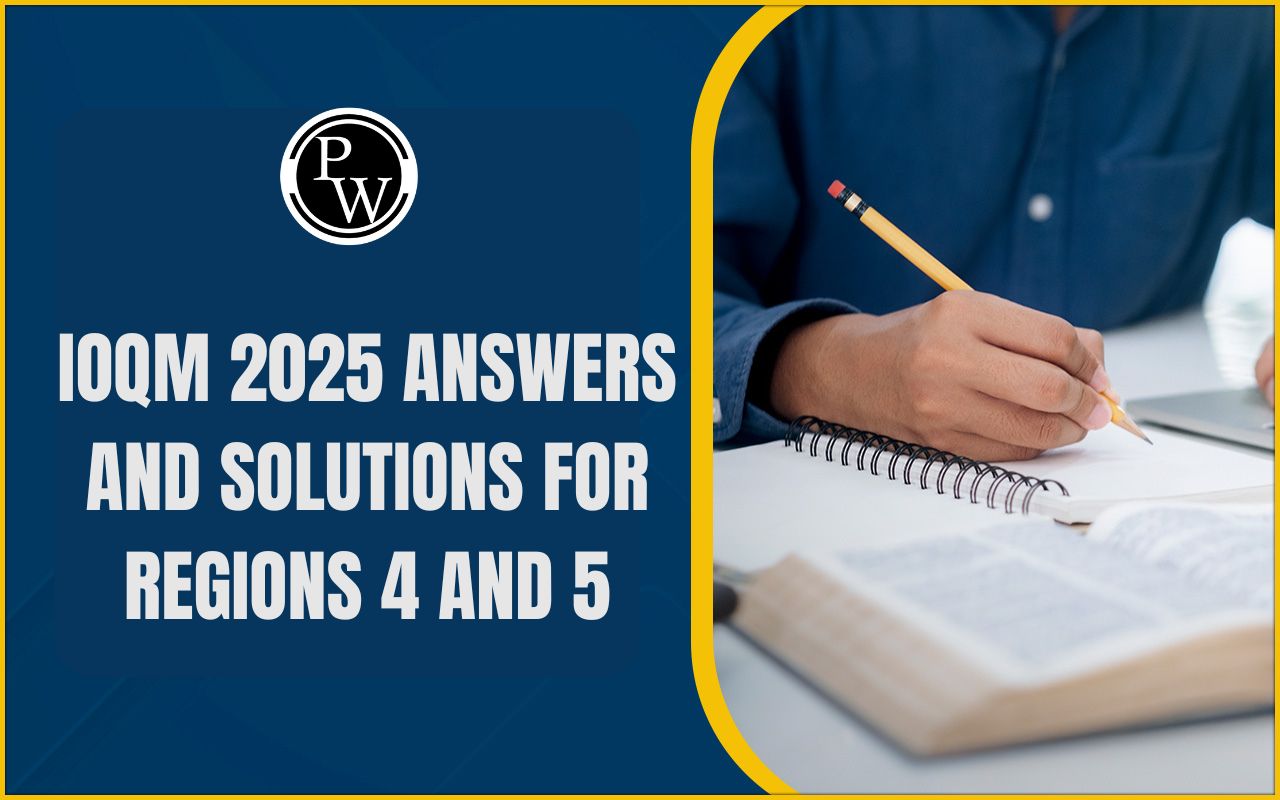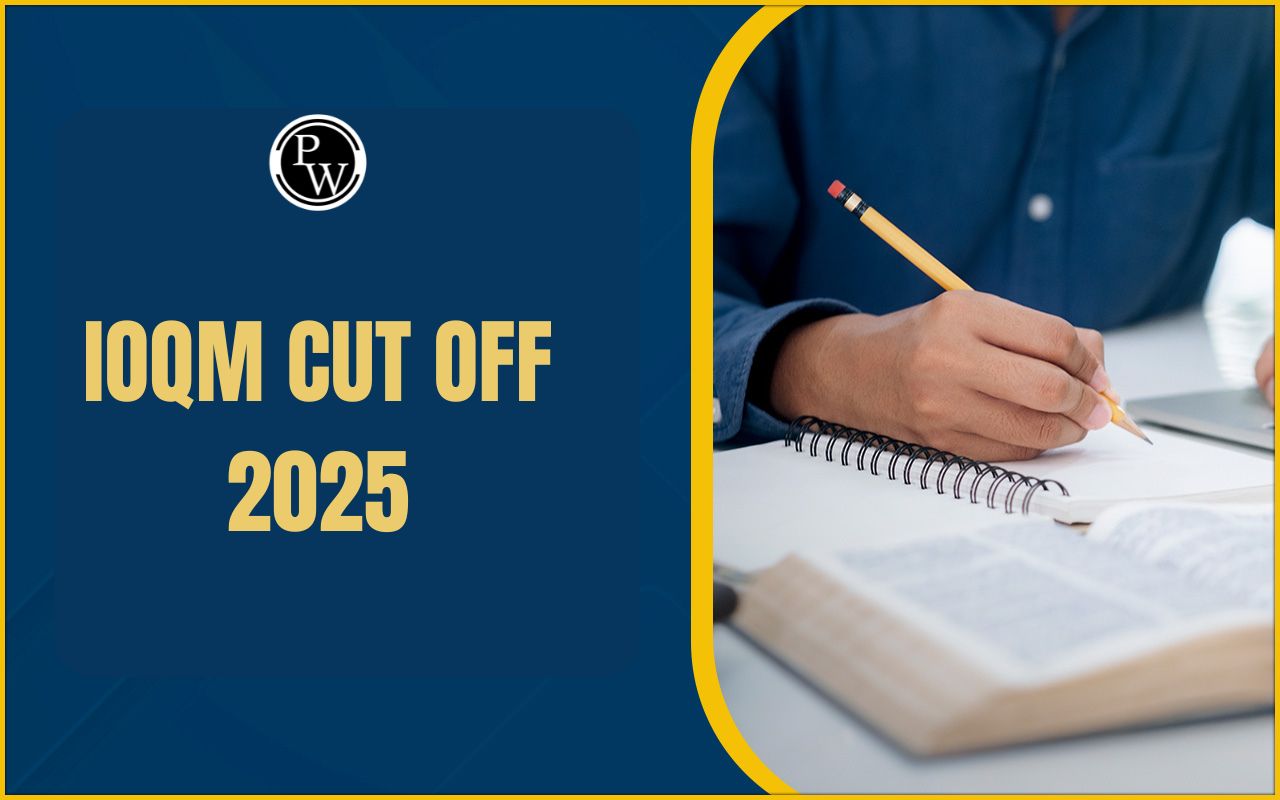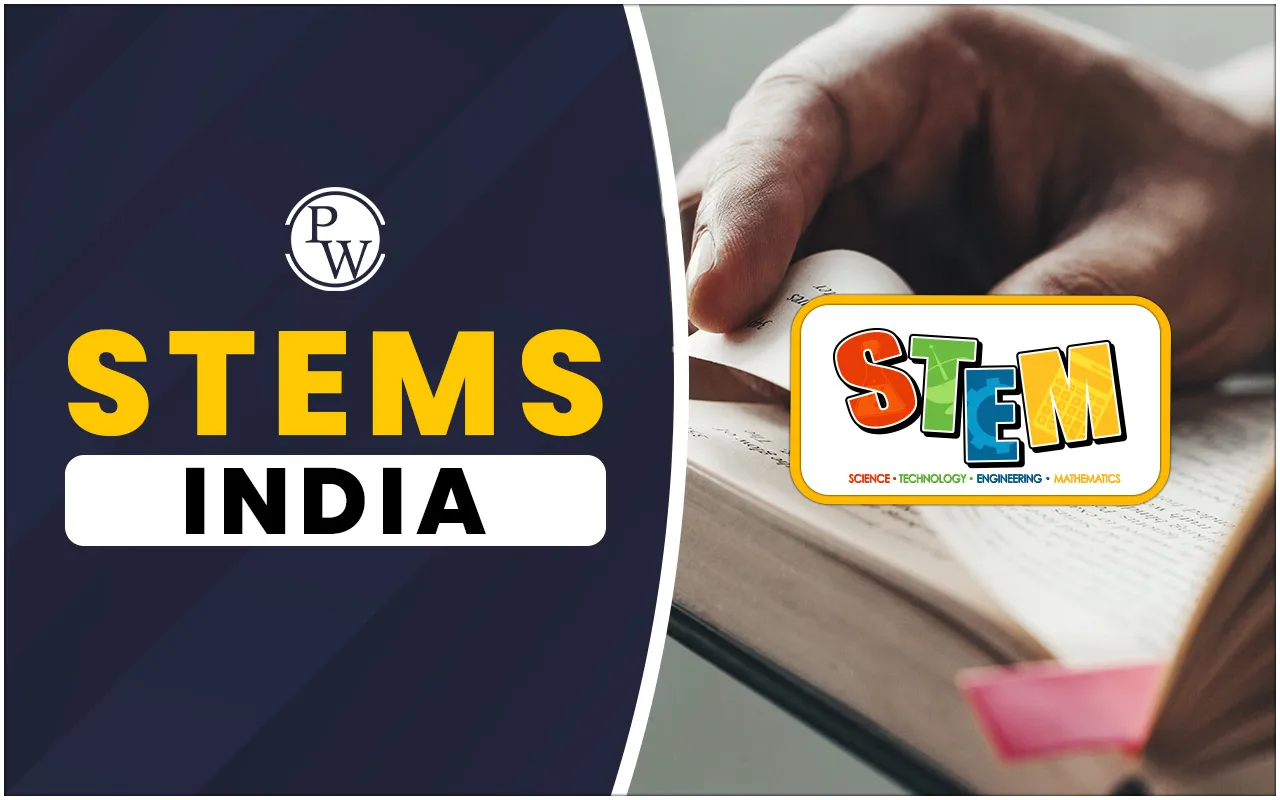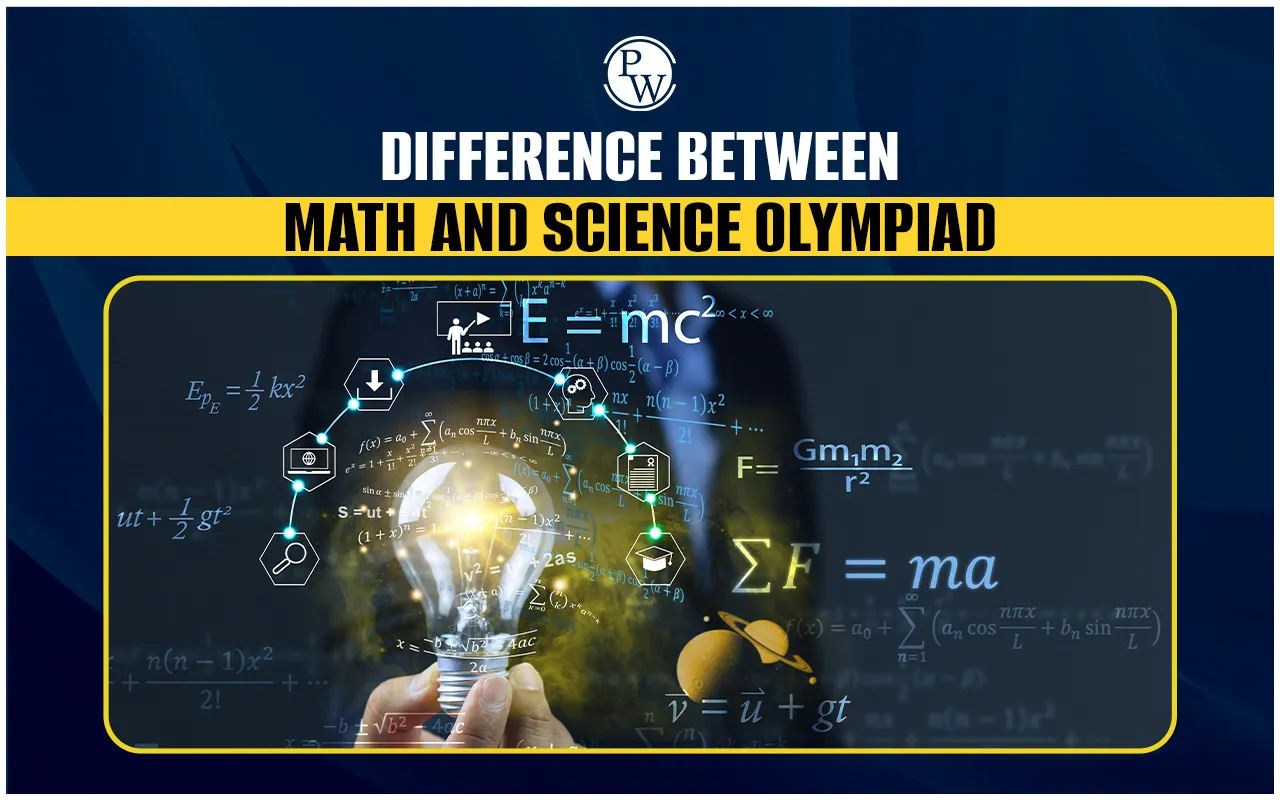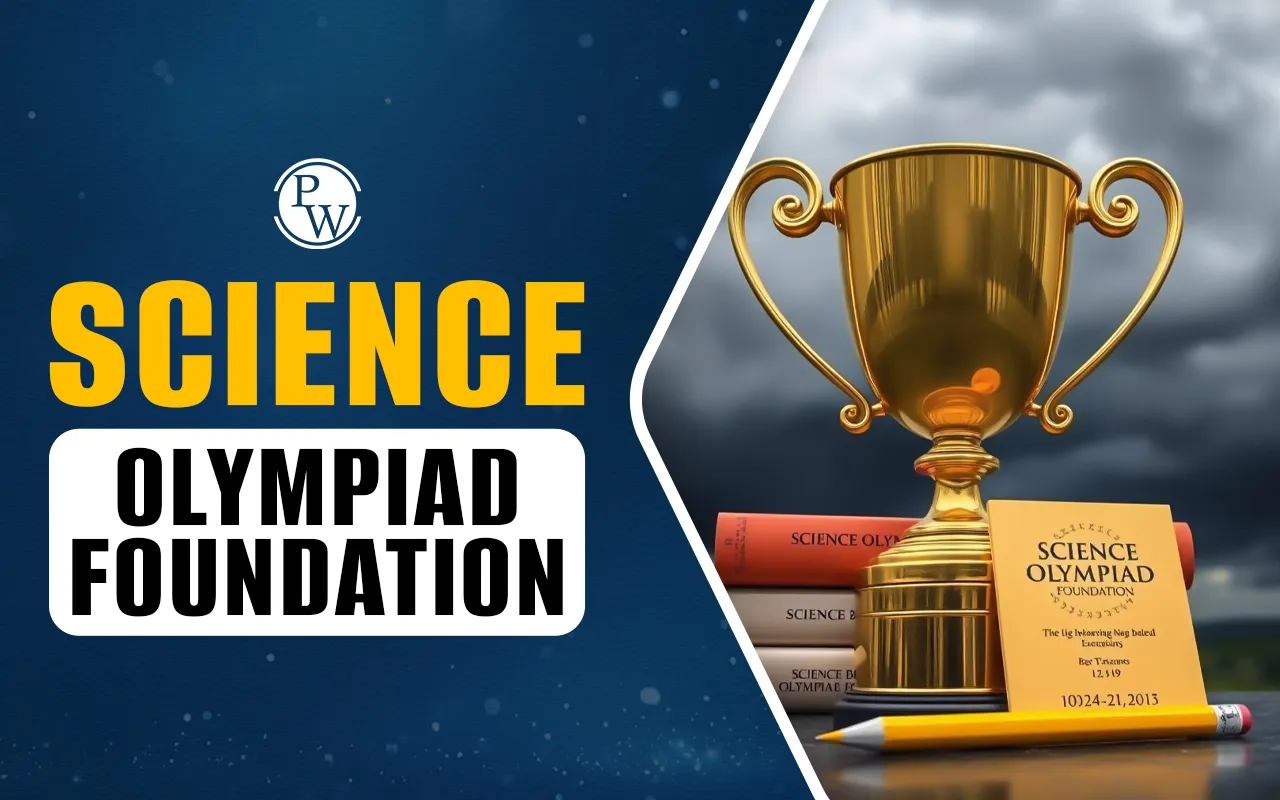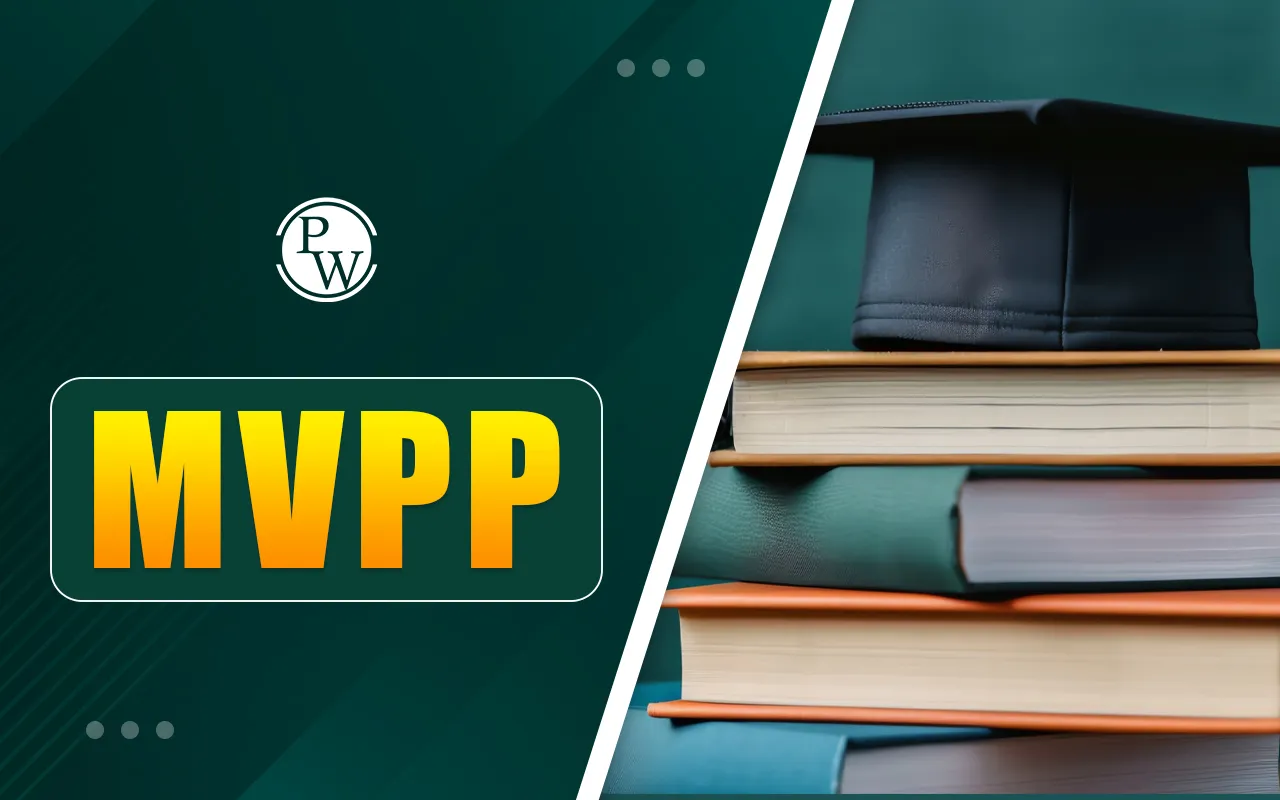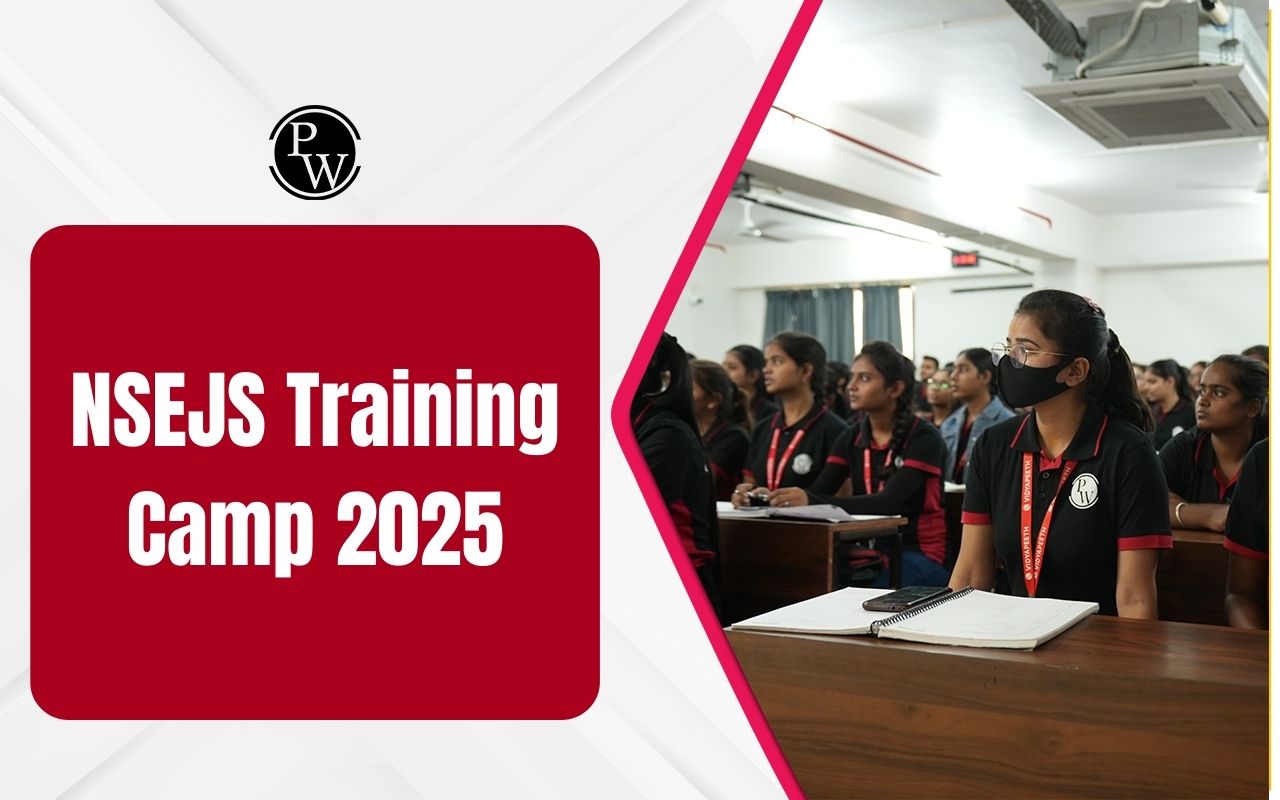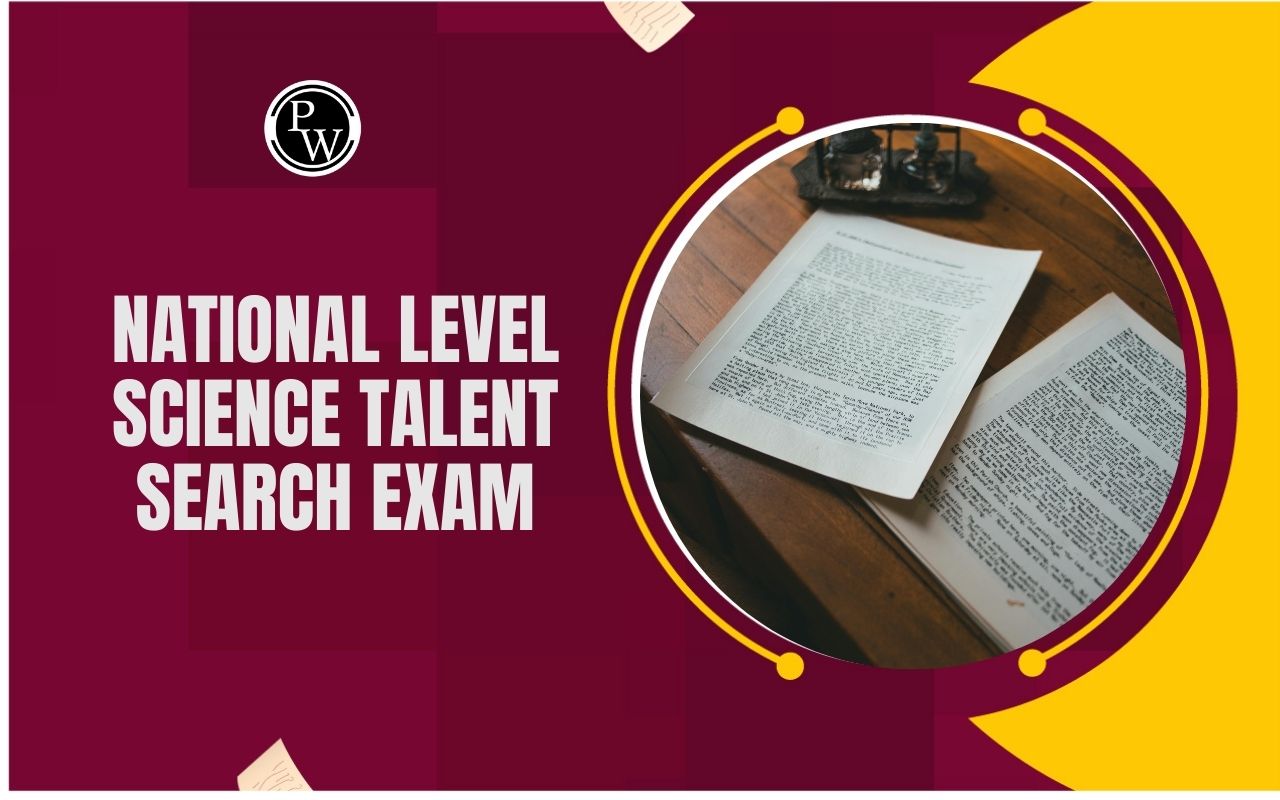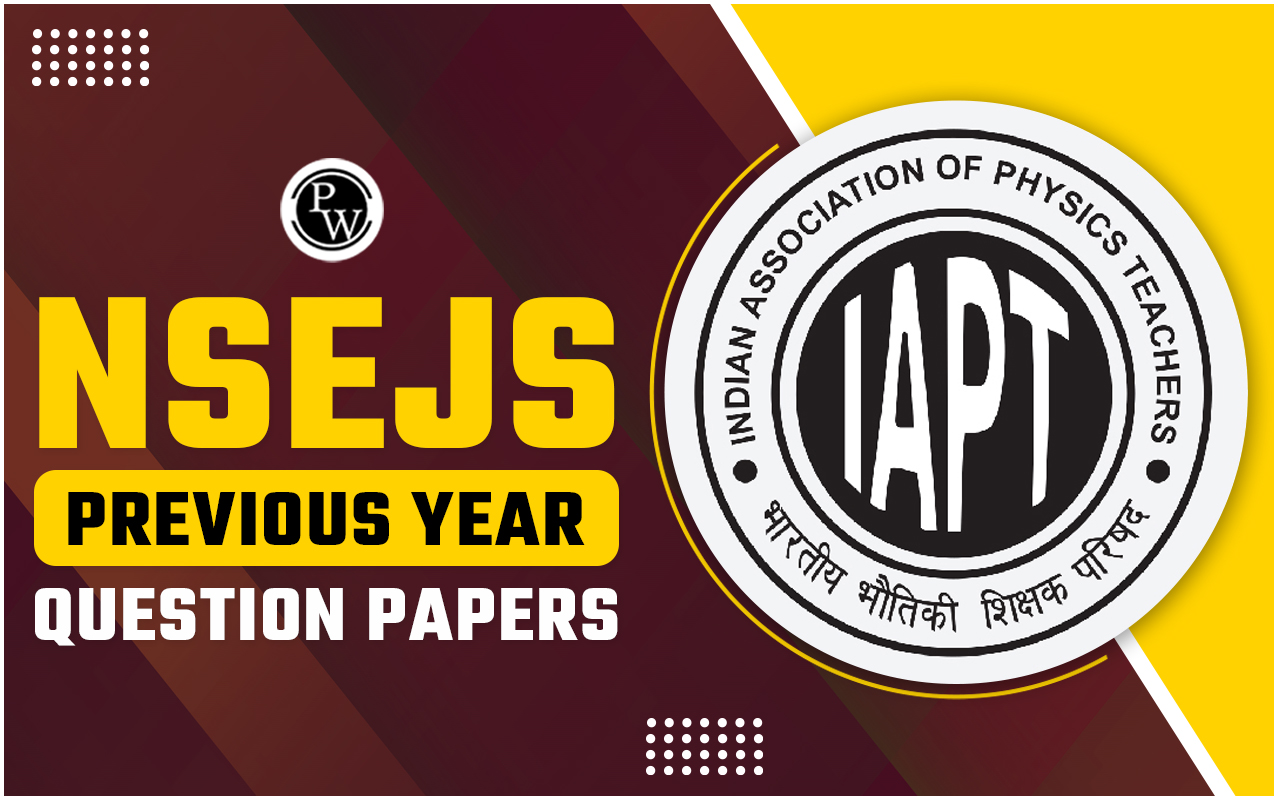
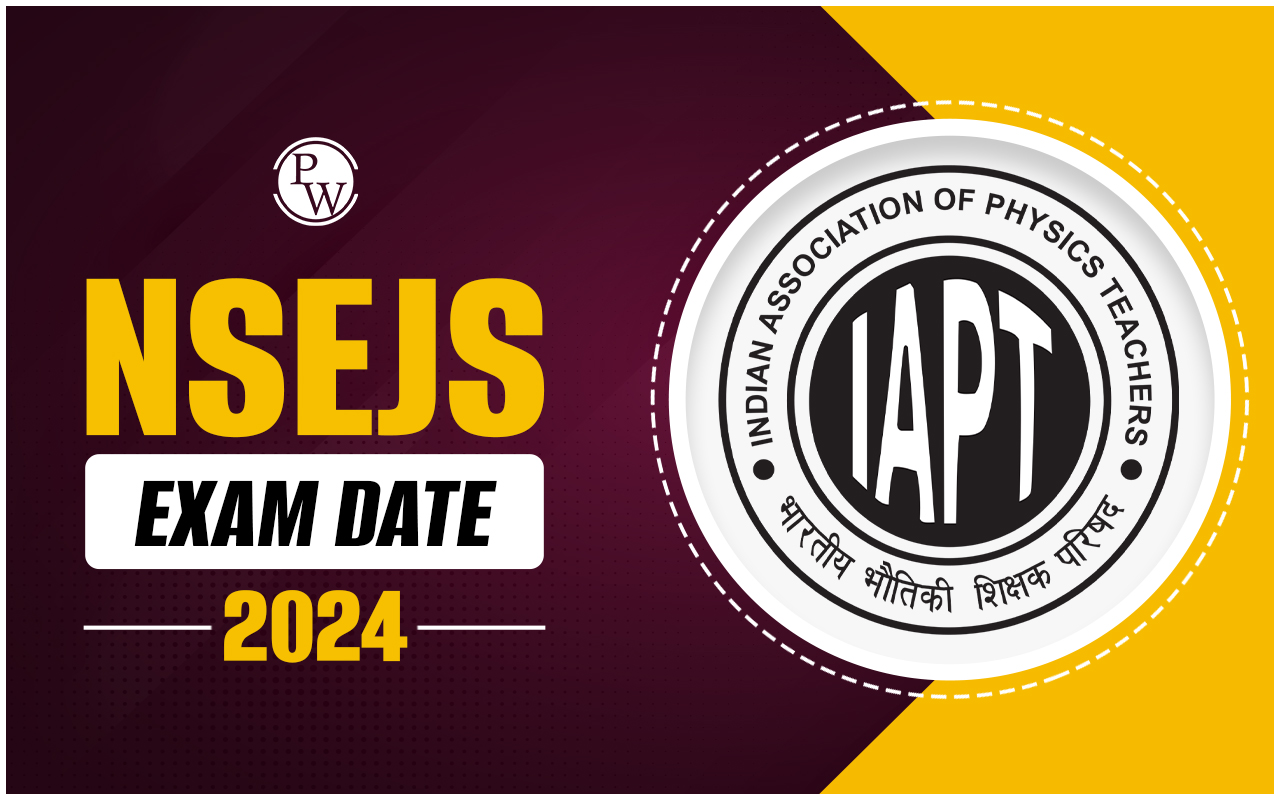
NSEJS Exam Date 2024 Out : The National Standard Examination In Junior Scientific (NSEJS) is a Science Olympiad, as its name suggests, and is a prestigious examination conducted in India to identify and nurture talented students. young scientific talent.
The IAPT (Indian Association of Physics Teachers) in collaboration with HBCSE (Homi Bhabha Centre for Science Education) conducts the NSEJS Exam which is one of the toughest national science exams.NSEJS Exam 2024 in DELHI & NCR (Delhi, Gurgaon, Noida, Greater Noida, Faridabad & Ghaziabad City) for leftover centres, will be conducted on 22nd December 2024 (Sunday) between 2:30 pm to 4:30 pm.
NSEJS Exam 2024 is scheduled to be held on 24 th November 2024 (2.30 pm to 4.30 pm) at various examination centers. The NSEJS stands for National Standard Examination In Junior Scientific is conducted for classes 9 and 10 and the NSEJS Admit Card 2024 for the same will be issued to the candidates 2 weeks before the NSEJS 2024 Exam Date.
NSEJS Exam Date 2024 Out
The Indian Association of Physics Teachers (IAPT) along with the Homi Bhabha Centre for Science Education organizes the National Standard Examination In Junior Scientific (NSEJS), a total of 60 Multiple Choice Questions (MCQs) are asked for 2 hours written examination. Every year around 20000 to 60000 High School students register for the NSEJS Examination and based on their performance candidates will be shortlisted for National Standard Examination In Junior Scientific. NSEJS Exam 2024-25 is an engaging quiz comprised of theoretical objective questions from science subjects (physics, chemistry, biology) for students who are interested and helping students shine and get ready for international competition. National Standard Examination In Junior Scientific is conducted in English & Hindi, Gujarati ,Bangla, Tamil & Telugu or any Indian Language.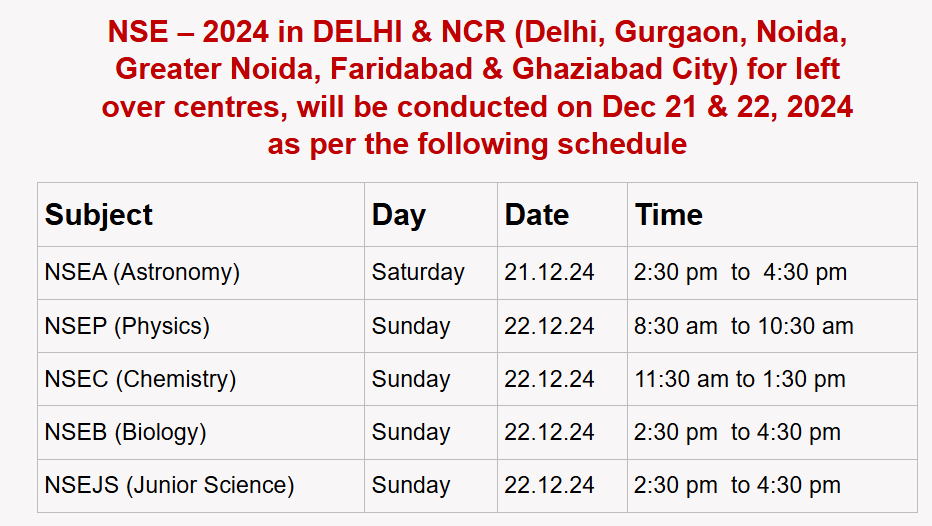
NSEJS Exam Date 2024
| NSEJS Exam Date 2024-25 | |
| Organization | IAPT (Indian Association of Physics Teachers) in collaboration with HBCSE (Homi Bhabha Centre for Science Education), |
| Exam Name | National Standard Examination In Junior Scientific (NSEJS 2024-25) |
| NSEJS Exam 2024 in DELHI & NCR (Delhi, Gurgaon, Noida, Greater Noida, Faridabad & Ghaziabad City) | 22nd December 2024 |
| NSEJS Exam Date 2024-25 | 24 th November 2024 (2.30 pm to 4.30 pm) |
| Mode of Exam | Online |
| No of Questions | Multiple Choice Questions (MCQs) - 60 Questions |
| Total Marks | 216 |
| Negative Marking | For each wrong response, one mark will be deducted. |
| Official Website | https://www.iapt.org.in/ |
NSEJS Exam Pattern 2024-25
The NSEJS Exam typically consists of multiple-choice questions. Here is a detailed look at the National Standard Examination In Junior Scientific Exam Pattern 2024-25:- Maximum Questions- There will be a total of 60 questions in the test.
- Maximum Marks- The question paper will be a total of 216 marks.
- Type of Questions- There will only be multiple-choice or objective questions.
- Duration- The National Standard Examination In Junior Scientific exam will last 2 hours.
- Medium- The question paper will only be offered in English, Hindi and Gujarati medium only (Option during registration).
NSEJS Syllabus
You can get the complete details of the NSEJS Syllabus from the below section.| NSEJS Syllabus | |
|---|---|
| Topics | Description |
|
Matter-Nature and Behaviour |
|
|
Chemical Substances - Nature and Behaviour |
|
|
Organization in the Living World |
|
|
Life Processes |
|
|
Motion, Force and Work |
|
|
Effects of Current |
|
|
Light |
|
|
Our Environment |
|
|
Natural Resources |
|
|
Food Production |
Plant and animal breeding and selection for quality improvement and management, use of fertilizers and manures; protection from pests and diseases, organic farming. |
|
Mathematics |
Polynomials; Linear equations; Quadratic equations; Number systems; Triangles; Trigonometry; Circles; Surface areas and volumes; Statistics. |
NSEJS Admit Card 2024-25
NSEJS Admit Card 2024 is an important document that must be carried to the exam premises without which students are not allowed to take the NSEJS Exam. NSEJS 2024 Admit Card will be released 15 days prior the exam date. After downloading the NSEJS 2024 Hall Ticket, students should go through all the mentioned details. If candidates find any discrepancies they must report the concerned authority.NSEJS Previous Year Question Paper
Students may manage their time to finish all of the NSEJS Examination's questions and assess the level of difficulty of the questions that will be asked in the National Standard Examination In Junior Scientific by using the NSEJS Previous Year Question Papers and Solutions. You may easily obtain the NSEJS Previous Year Question Paper PDF and Answer Key by clicking the link below.NSEJS Previous Year Question Papers
NSEJS Exam Preparation Tips
Here are the preparation tips for NSEJS Examination 2024- Understand the exam: There are multiple choice questions in NSEJS Exam, and data analysis. A wide range of subjects are required, with the free response section being the most difficult and there is a slight change in the Exam Pattern on annual basis.
- Start early: It will take a lot of time to learn, comprehend, and revise material covering so many topics. Make sure that you start well in time. An average of 2-4 hours of study time per day should be sufficient for you if you have six months to spare.
- Stay up to date with sites: In order to stay informed about the most recent developments and modifications to examination procedures, you must thoroughly review the sites. The most significant websites are the IAPT (Indian Association of Physics Teachers) site and the Homi Bhabha Center for Science Education website.
- Practice Diagrams well: Diagrams tend to take a lot of time. Be sure to practice them so well that you do not have to think too much in the examination.
- Know your reference books: A comprehensive list of reference books necessary for your preparation is given on HBCSE site. Be sure to go through them well.
- Study your environment: Biology is the science of life, and you are surrounded by life. When you start thinking about the application of Biology to daily life, you get an entirely different perspective.
NSEJS Exam Date 2024-25 FAQs
Q1. What is the NSEJS Exam Date 2024-25?
Q2. Which organization conducts the NSEJS Examination?
Q3. What is the NSEJS Exam schedule and Exam mode?
Q4. What is the Syllabus and Exam Pattern for the NSEJS Exam 2024?




